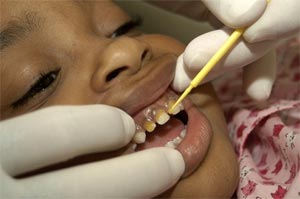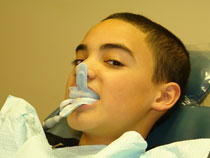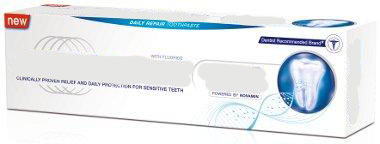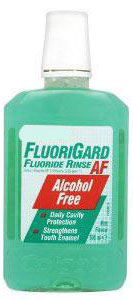Introduction
Fluoride is a mineral that occurs naturally in many foods and water. Every day, minerals are added to and lost from a tooth’s enamel layer through two processes, demineralization and remineralization.
Minerals are lost (demineralization) from a tooth’s enamel layer when acids formed from plaque bacteria and sugars in the mouth attack the enamel.
Minerals such as fluoride, calcium, and phosphate are redeposited (remineralization) to the enamel layer from the foods and waters consumed.
Too much demineralization without enough remineralization to repair the enamel layer leads to tooth decay
In What Forms Are Fluoride Available?
As mentioned, fluoride is found in foods and in water. It can also be directly applied to the teeth by a person themselves through fluoridated toothpastes and mouth rinses.
Fluoridated toothpastes:
Fluoridated mouthrinses:
Certain people are excluded from using fluoridated mouthrinses:
- Children under 6 years of age
- Those of any age who cannot rinse due to facial muscle problems or other handicaps
A dentist in his or her office can also apply fluoride to the teeth as a gel, foam, or varnish. These treatments contain a much higher level of fluoride than the amount found in toothpastes and mouth rinses.
Varnishes are painted on the teeth; foams are put into a mouth guard, which is applied to the teeth for one to four minutes; gels can be painted on or applied via a mouth guard.
 |
 |
Example of fluoride varnish and application procedure on a child
 |
Example of fluoride gel/foam on a mouthguard used in a child
Benefits of Fluoride
Fluoride helps to prevent caries during the remineralization and demineralization processes. When fluoride is present in the oral environment at sufficient levels, its release helps inhibit the dissolution of calcium and phosphate in enamel.
Topical fluoride and salivary minerals enhance remineralization.
The action of fluoride accelerates the rebuilding of enamel and can stop or even reverse the progression of dental decay and, more importantly, makes enamel more resistant to acid demineralization than it was originally.
When Is Fluoride Intake Most Critical?
It is certainly important for infants and children between the ages of 6 months and 16 years to be exposed to fluoride. However, adults benefit from fluoride, too.
New research indicates that topical fluoride from toothpastes, mouth rinses, and fluoride treatments are as important in fighting tooth decay as in strengthening developing teeth.
In addition, people with certain conditions may be at increased risk of tooth decay and would therefore benefit from additional fluoride treatment. They include people with:
- Dry mouth conditions: The lack of saliva makes it harder for food particles to be washed away and acids to be neutralized. It can be caused by diseases such as Sjögren’s syndrome, certain medications (such as allergy medications, antihistamines, antianxiety drugs, and high blood pressure drugs), and head and neck radiation treatment.
- Gum disease: Gum disease, also called periodontitis, can expose more of your tooth and tooth roots to bacteria increasing the chance of tooth decay. Gingivitis is an early stage of periodontitis.
- History of frequent cavities: If you have one cavity every year or every other year, you might benefit from additional fluoride.
- Presence of crowns and/or bridges or braces: These treatments can put teeth at risk for decay at the point where the crown meets the underlying tooth structure or around the brackets of orthodontic appliances.
| Last Reviewed | : | 23 August 2019 |
| Writer | : | Dr. Leslie S. Geoffrey |
| Accreditor | : | Dr. Cheng Lai Choo |
| Reviewer | : | Dr. Sharol Lail bin Sujak |














